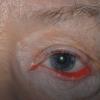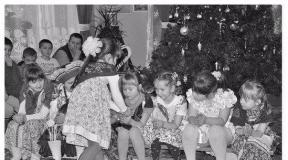How to protect strawberries from birds? Ways to protect strawberries from pests and diseases, methods of control and safety measures How to protect strawberries
Strawberries (and more precisely, garden strawberries) are grown by gardeners and gardeners wherever the climate allows. This is a very tasty berry. Unfortunately, this is known to both people and birds. Starlings, thrushes, sparrows, magpies, and even crows will gladly eat both ripe and unripe berries. Summer residents, especially those who do not live on the site permanently, have nothing left. Therefore, it is important to know what can be done to protect the strawberry crop.
How to protect strawberries: mesh and covering material
The most common solution is to cover strawberry beds with a net or covering material. All this can be purchased at construction, agricultural stores or on the Internet. Plastic, polypropylene or metal mesh with cells in the form of rhombuses, rectangles and squares does not interfere with access to sunlight and moisture, as well as the process of pollination of strawberries by insects.
The grid for beds is presented in stores in the widest range
Breathable opaque covering material (Lutrasil, Spunbond, Agril, Agrospan) provides a greenhouse effect. Birds do not see berries, respectively, and do not seek to get into the garden. But pollination in a natural way in this case is impossible. Without the sun, strawberry bushes do not grow well, the berries ripen longer, the yield decreases. With excessive watering, rotting of plantings is possible.
Covering material allows you to hide the crop from birds
When closing the bed, pegs are driven in along the perimeter with an interval of 45–50 cm, onto which the material is fastened so that it descends to the ground. There it also needs to be fixed, for example, with bricks. They are pulled tight enough so that the mesh does not sag in the center. The height of the structure is 15–20 cm higher than the strawberry bushes.
Video: how to fix covering material on the garden bed?
Indeed, it is problematic for birds to get to the berries in this case, but the solution is not without drawbacks:
- It is necessary to find a sufficiently dense fine mesh. Ordinary fishing will not work. Birds freely enter the cells. If the mesh is too thin, it will simply break. Therefore, finding the right material can take a lot of time and effort.
- Question price. If you have a small plot and 1-2 beds, you should not even think about it. And those who grow strawberries on an industrial scale must purchase hundreds of square meters of covering material and netting. It turns out to be quite difficult.
- Planting care becomes much more difficult. It is also impossible to walk through the garden, picking a couple of berries along the way. With any weeding, loosening, fertilizing, watering, harvesting, the mesh and material must be removed, and then the bed should be covered again. Such frequent use drastically reduces the life of the material - holes are formed, which are immediately expanded by birds.
- Birds that see delicious berries do not consider the net a serious hindrance. In an effort to reach them at all costs, they become entangled and stuck in such a way that they cannot free themselves from the cells without outside help. People have to help. Birds do not appreciate this and bite painfully.
- An important factor is aesthetic. The mesh just thrown over the beds looks very messy. So, you need to think about how to fix it beautifully. This means additional expenditure of effort, time and money.
The mesh stretched over the beds interferes with the normal care of strawberries and harvesting
The purchase of a set of special frame arcs made of metal, plastic or bamboo can partially offset the shortcomings. They are quite light, so no foundation is required. Their number depends on the length of the beds. The optimal distance between the arcs is 60–80 cm. They must be installed and the grid must be fixed on top - a structure should be obtained that resembles a section of a tunnel. If you find high enough arcs, you can go inside, like in a greenhouse or greenhouse. This greatly facilitates the care of plantings and harvesting. But the beds are very narrow.
When fruiting is over, the mesh is removed, and the frame is dismantled until next year.
Therefore, the best solution is a mesh made of plastic, fine-meshed (so that birds do not get confused), rather rigid (so that it does not sag), fixed on frame arcs. Separate pieces will be needed to cover the resulting "tunnel" from the ends. Otherwise, the design loses all meaning.
If you decide to use the mesh and arc method, the birds will not be able to get to the strawberries, and it will be convenient for you to take care of the beds.
Video: strawberry bed protection net
Box with mesh lids
Another option for protecting strawberries with a mesh is devoid of the listed disadvantages, but requires certain practical skills. If you have experience in carpentry or joinery, build boxes with mesh covers for planting.
The algorithm of actions is as follows:
- Choose boards of suitable length and width.
- Assemble a wooden box with cross lintels every 60-80 cm, fastening the boards with screws and corner bars. It is not necessary to make it very high - ventilation is deteriorating, the berries do not have enough sun. It is enough that the future cover does not touch the landings. Other parameters are determined by the size of the beds.
- Attach legs from short bars to the box in each corner, sharpening them from below. If the bed is very long, you will need additional legs on the long side. Since the legs will be driven into the ground, treat the tree with a special compound that prevents rotting. You can just burn them.
- Set the box on the bed and drive the legs into the ground, gently tapping on the corners with a hammer.
- Protect the structure from the negative effects of natural factors - rain, snow, cold, wind. A primer will help with this. It is sold in hardware stores, but the composition prepared by yourself is no worse. 1 kg of slaked lime should be diluted in 2 liters of water and 100 g of laundry soap shavings should be added. All this is thoroughly mixed and filtered immediately before processing the boards.
- Focusing on the dimensions of the resulting sections, assemble frames for covers from thin bars.
- Attach the lids to the frame using hanging loops installed on the outside so that it opens outward.
- Cut out pieces of mesh of the desired size and fasten it with staples using a furniture stapler, bent small nails, thin slats.
- Attach a handle, a loop or something else to each lid, allowing it to be opened freely.
The beds in the boxes look very neat and securely protected.
What can scare the birds?
Any methods common to the people are not very useful. In the first few days, the effect may be noticeable, but the birds are not stupid and quickly figure out what they are dealing with. Finding that there is no real danger from something scary-looking, they boldly continue to destroy your berries.
Birds flying into the garden in flocks can destroy your crop in a couple of days
Therefore, the methods described below should be alternated and combined as often as possible. Only in this way will you achieve a more or less permanent result.
Scarecrow
"Grandfather" method, used since time immemorial. At present, a classic effigy of two cross-shaped poles or boards, dressed in old clothes, stuffed with straw, with a bag depicting a head, is practically not used for quite obvious reasons. Birds are not at all afraid of him. On the contrary, on the “shoulders” of this structure, they are happy to relax after a delicious dinner. It is also a great position for looking out for the most delicious and ripe berries.
But your children will get great pleasure from the process of building a scarecrow. For them, this is a great opportunity to show imagination and creativity. As a basis, you can use, for example, an old mannequin.
If you still decide to protect your beds with a scarecrow, regularly rearrange it from place to place and change its appearance. The more radical the better. It is also useful to fix the structure so that it rotates on a support.
Scarecrow - a traditional, but ineffective method of scaring away birds
Somewhat more effective are plastic and rubber naturalistic models of birds of prey sold in agricultural stores, made in compliance with dimensions and proportions. Especially if they are “decorated” with something shiny and they are accompanied by a device for reproducing and recording the sounds made by these birds.
An electrified mannequin equipped with a motion sensor would greatly help gardeners and gardeners, which, when birds approach, would begin to make sounds and, for example, wave their “arms”. But the introduction of such structures into production is a matter of the future. And the price will be appropriate. On small personal plots, such a “scarecrow” simply will not pay off.
Video: how to make a scarecrow?
Noise
The hearing of birds is much more subtle than that of humans. Therefore, they do not tolerate sharp loud sounds. Try to save the beds like this:
- Stretch several threads or thin wires over them and hang cans close to each other at different heights. A more aesthetic option is “wind music”. At the slightest breath, the jars and tubes will swing and hit each other, making noise. But you will have to endure it too. This is especially "pleasant" late at night or early in the morning. And every day you can quickly get tired of removing cans and hanging them back. In addition, the wind does not always blow.
- Every day, turn on special audio recordings that reproduce the calls of birds of prey or the cries of feathered "pests", signaling danger to relatives. They are sold in gardening stores and online. If you want to save money, just turn the radio up loud. However, such a soundtrack will most likely not please your neighbors.
Color and shine
High posts are driven into the corners of the beds. A thin rope or wire is stretched along the perimeter and crosswise at different heights. Hang on it:
- Old CDs and DVDs. Fluctuating under the gusts of wind, they reflect the sun's rays, discarding the "bunnies". But in cloudy weather, birds almost do not pay attention to them.
- Unnecessary Christmas decorations, “rain” and tinsel, ordinary foil, as well as polyethylene or cellophane cut into “fringe”. The beds in this case look elegant and festive. But if you overdo it with "decorations", it is almost impossible to care for them.
- A tape removed from an audio or video cassette. It can be hung in the form of a fringe and additionally pulled tight around the perimeter, surrounding the bed several times. The tape not only shines and moves, but also makes a rattling sound unpleasant for birds at the slightest breath. It is almost on the verge of ultrasound, therefore it is almost inaudible for a person.
- Bandages, white ribbons, flags and balloons filled with helium. There is an opinion that birds do not like white color and are afraid of it. The balls can be given an even more intimidating look by painting something resembling an eye in red, blue or black paint.
- Homemade turntables from plastic bottles. Plastic reflects light, and the structure rotates in the wind. It can be a spectacular addition to garden decor.
Birds quickly realize that all this glitter and rustle does not carry any real danger.
Old disks hanging over the garden glare in the sun, scaring away birds.
Special devices
Science does not stand still, so special devices that scare away birds have appeared on sale. Most often, they are equipped with a built-in infrared or laser motion sensor, therefore they turn on only when a feathered landing approaches.
The devices emit high-range sounds that are unpleasant for birds, indistinguishable by the human ear.
The device is equipped with a motion sensor.
There are also devices that periodically make loud sharp sounds, reminiscent of the howl of a siren, claps or shots. Sometimes this is complemented by flashing or glowing. On some, you can adjust the frequency and volume of the sound.
The sonic gun emits loud noises when birds approach
Such devices are certainly effective, but they are quite expensive. Therefore, the owners of small personal plots do not even consider the possibility of such an acquisition. The harvest is not worth it, there are less costly methods to protect it.
Video: how to scare away birds
What to plant for distraction?
Gardeners who sympathize with Greenpeace, IFAW and other wildlife organizations can offer birds alternative source nutrition.
A row with strawberry beds is planted with berries that ripen at about the same time as strawberries, the loss of which will upset you less. It can be bird cherry, sea buckthorn, shadberry, chokeberry and red mountain ash, wild cherry. The method does not guarantee anything. Birds are not obligated to eat only the berries intended for them. It is very likely that they will destroy both them and the strawberries. But not a single feathered one will suffer. Even morally, seeing the berries and not being able to get to them.
Other ways to protect berries
Cats in the garden will help you deal with uninvited guests
How else can you protect the harvest grown with such difficulty?
- The easiest way is to increase the landing area. So there will be enough berries for both the birds and you. But not all summer residents are ready to share with the "freeloaders" the crop, for the cultivation of which so much time, effort and money have been spent. In fact, almost no one is ready, except for some fanatical nature lovers.
- Get a cat, preferably several. Or at least periodically lure neighbors or stray animals to you. To do this, you can, for example, plant valerian. Hunting, as a rule, turns out to be unsuccessful, but the very fact of the presence of natural enemies on the site will make the birds be less arrogant. A significant disadvantage is that animals that are carried away by the process of catching birds can strongly trample the beds. And not just with strawberries. In addition, the presence of wild cats and small children on the site at the same time means the need for constant surveillance of them by their parents.
- Birds of prey (hawks, falcons) are much better and more effective than cats. Ravens are also useful in this sense. They do not trample the beds and do not eat strawberries. Before visiting your site, a flock of birds sends "scouts" ahead. They will certainly inform the rest about those who protect your plantings, and will fly around the beds on the tenth road. However, the maintenance of one hunting bird costs more than a dozen cats.
- Arrange a small stream, a waterfall next to the strawberry plantings, put a decorative fountain. The hearing of birds is much sharper than that of humans, they will certainly be attracted by coolness and murmuring water. There is a chance that, flocking to the water source, they will ignore the beds. But nothing prevents them from resting in a pleasant place, then destroying your harvest.
- Arrange onions or onion feathers cut into several pieces on strawberry beds. Birds do not like this smell very much. The downside is that you also have to endure it. In addition, berries can also absorb the smell.
- Before the strawberries ripen, scatter bright red wooden cubes, plastic bottle caps, and so on around the beds and next to them. Birds will try to peck at them and find that they are inedible. When the berries ripen, the birds, remembering the absence of anything edible here, will pay less attention to your beds.
- An option for the squeamish and strong in spirit. Find a dead bird somewhere, bring it to your own yard and hang it next to the strawberry beds. This will help you get rid of birds not only for this season, but for the next few years. It looks rather unaesthetic, by no means decorating the rural pastoral, and the smell is appropriate.
- Laying out poisonous baits on the site or total shooting of birds. An extremely unfortunate decision, even if you have the appropriate skills to exclude accidental hits on relatives, guests and neighbors, and there are no pets that can also be poisoned. Few people think about this, but in addition to the visible harm in the form of crop destruction, birds bring significant benefits to the garden. In addition to berries, they feed on insect pest larvae and weed seeds. Now we have to fight them. By destroying the birds, you will deprive insects of natural enemies, increasing their population at times, and also condemn yourself to endless weeding. This will require even more time and effort.
Diseases and pests of strawberries often lead owners to painful disappointments in this culture. And under unfavorable circumstances, they can completely destroy the crop, and even the plants themselves.
gray berries
A few days before ripening, the berries that have already begun to turn red are covered with fluffy gray coating. This is gray rot, or botrytis, a disease caused by a microscopic fungus.
The simplest and longest known method of protecting the strawberry crop from gray rot on the suburban area during prolonged rains, it is to close the plantations with film shelters from above and slightly raise the berries above the ground, substituting special plastic supports and fasteners under the stalks.
A reliable modern way to reduce crop losses is the choice of resistant varieties. Early strawberries and light fruits with thin skin are most susceptible to this disease, therefore, it is desirable to reduce the number of such varieties in your area.
Modern varieties, which gardeners often scold for excessive pulp density, are just the most resistant to gray rot.

Although science knows a huge number of diseases of this crop (76 fungal infections and at least 19 harmful viruses are described), pests cause the greatest damage to strawberries.
As practice shows, with strict adherence to the optimal agricultural technology of strawberries, diseases can be dealt with without chemical plant protection products. But it is not yet possible to refuse chemical treatments against insects.
In June - July, strawberry bushes wilt during hot hours for no apparent reason.
For an accurate diagnosis, withering bushes are carefully dug up and the root collar zone is examined. Sometimes the culprits of the misfortune are found there - the larvae of the root weevil.

They are cream-colored, 4–5 mm in size, and curl into a crescent when touched. This is a group of insects, which include the small black bevel, earthy elephant and nettle leaf weevil.
Initially, adults feed on the leaves of strawberries, gnawing holes in them. The edges of these holes are clean (without traces of mucus, unlike traces of slugs), as if with singed edges. The female weevils then lay their eggs near the base of the bushes.
The larvae appearing in June - July feed on juices from the root neck of the plant and young roots. The bushes themselves, as a rule, with already pouring berries, begin to lag behind in growth and for no apparent reason wither first during hot sunny hours, and then all the time, even if there is enough moisture in the soil.

If several larvae feed on one bush, then we lose not only the harvest of this year, but the whole plant.
In some years with adverse weather conditions, crop losses from this disease can be up to 100%. Unfortunately, it is impossible to save diseased berries. After all, it is impossible to carry out processing during ripening.
To limit the harmfulness and intensive reproduction of all types of weevils prevention is recommended: careful removal from plantings in the fall of all decaying plant residues - dead leaves of strawberries, raspberries and apple trees - and deep digging around the soil plants in autumn.
Individuals that settled for the winter in the upper layers of the soil for wintering, find themselves at a greater depth and die. Of the folk remedies for the control and prevention of these pests, a method of mulching the soil around plants with spruce needles is known.
The layer of mulch also makes it difficult for insects to get to the surface of the soil, and the strong smell repels females that lay eggs.
If the pest still appears, then the affected bushes are removed, and all strawberry plants in the area are shed under the root with a Fufanon solution.

From slugs
To protect strawberries from molluscs, there is a folk remedy - to dust the soil around the plants with lime or ash.

There was a slug here.
Harmful web
In especially hot years, many light dots appear on the upper side of the leaf blades after fruiting. New leaves are not laid. Plants begin to lag behind in growth, the leaves lighten, become covered with cobwebs and dry out.
This is what "traces of a crime" look like spider mite. Individual individuals are almost invisible due to their small size (no more than 0.5–1 mm) and transparent whitish color on the leaves. Adult mites overwinter on plant debris.
In the warm season, they live on the underside of adult leaves, sucking out the juices. Provokes the spread and intensive reproduction of this pest for a long time - more than 3-4 years - growing strawberries in one place.
You can do without chemical treatment with optimal agricultural technology. This is the regular removal of plant residues, the maintenance of crop rotation and the maintenance of optimal soil and air moisture (sprinkling) during a drought.
Yes, and the correct selection of varieties - with dense leaves and a loose structure of the bush, resistant to this pest - can reduce the harmfulness of the spider mite to nothing.

Spider mite symptoms. Photo: From the personal archive / Nina Belyavskaya
sick leaves
Sometimes, in very wet and rainy weather, a fluffy white coating appears on the underside of the leaf blade. The leaf is deformed, subsequently turns brown and dies. This is how strawberry powdery mildew manifests itself.

From mid-summer, small specks of white, purple or brown appear on old strawberry leaves located along the periphery of the bush.
In cool damp weather, the number of such spots on the leaves and their size increase rapidly, as a result of which the leaves begin to die prematurely. This means that strawberries are affected by one of the so-called blotches (a group of infections caused by a microscopic fungus).
All these diseases have something in common: initially they enter the site along with planting material, winter on dying plant residues, and their rapid development is facilitated by the warm and humid microclimate that forms inside the plantings.
For this reason, the greatest yield losses occur in damp areas and heavily dense plantations.
Rejuvenate Plantings
To prevent the disease, it is important to create and maintain an optimal microclimate and a minimal infectious background.
As long-term practice shows, the appearance and rapid development of such spots occurs, as a rule, on very old plantings, which are more than 4 years old. And most often this is a signal about the need to replace and rejuvenate plants.
The basis of all preventive measures is the acquisition of healthy seedlings of modern resistant varieties. Equally important is the choice of a sunny, well-ventilated area for planting strawberries and the correct layout.
Densely leafy varieties that form a large number of mustaches during the season are planted at a distance of at least 40 cm from each other. For low leafy and low mustache varieties, this distance is at least 20 cm. In the future, it is necessary to regularly remove old dead leaves and thickening extra whiskers.

The correct and moderate use of mineral nitrogen fertilizers. They contribute rapid growth leaf mass and whiskers.
The tissues of the plant turn out to be more loose and moist, riddled with large pores through which fungal spores easily penetrate inside, causing disease.
With regular foliar spraying with solutions of trace elements and humate on the leaves, strawberries get sick much less often.
Of the measures for the active protection of plants from such diseases, it is recommended to remove and burn heavily affected leaves and spray with universal fungicides (1-2% solution of Bordeaux liquid, topaz, topsin-M).

Garden crops and their fruits are of interest not only to the owner of the site, but also to birds. To minimize the damage that the latter can cause, today there are many effective methods and options that allow you to save the crop without drastic measures regarding the destruction of intruders.

Ways to protect the berry
Strawberries are on a special account with gardeners, so its cultivation takes place everywhere and not only in open field, but also in greenhouse conditions in regions where its cultivation is impossible in the light of the climate. In the latter case, there is much less risk of losing the crop, since the berries are well protected due to their placement inside the greenhouse. As for the garden, there are quite a lot of people who want to enjoy strawberries. Sparrows, starlings, crows and many other species of birds quite often visit vegetable gardens and orchards, consuming not only ripe Victoria, but also unripe fruits.
As a result, summer residents who are not regularly present on their plots, and land owners who permanently live nearby, have to take measures to preserve the crop. And since this issue has been relevant for more than a decade, the owners of berry crops are armed with a large arsenal of all kinds of effective methods to protect strawberries from birds and save their crops.


Summer residents and gardeners, along with folk remedies, use modern options, each of which has its own advantages and disadvantages. The most effective methods are modernized, the less effective ones are forgotten.
Most often they resort to covering the ridges with a net or other similar raw materials. Such materials are freely available in the markets and supermarkets, in addition, the choice of products allows you to choose a product for every taste. As practice shows, if you close the berry bushes with a cellular mesh made of plastic or metal, the honeycombs will not become an obstacle to the penetration of sunlight, moisture and allow insects to pollinate the crop, but they will become a barrier for birds.
Cells may have different shape, for example, a square or a rhombus, the main thing is to correctly determine the size.

Also, in order to save the beds, you can use a breathable opaque material - Agril or Spanboard, which will hide the berries from the birds and create the effect of a greenhouse inside. But in this case, natural pollination for plants will become impossible, and without sunlight, strawberries will noticeably lag behind in ripening.
Closing of berry plantations is carried out along the entire perimeter, to fix the material, pegs are driven into the ground in increments of half a meter. As an additional reinforcement, the raw materials are pressed to the ground with heavy objects. The tension should be maximum to avoid sagging in the center. The recommended height of the structure should be above the bushes by an average of 20 centimeters.
However, the work may be associated with some difficulties when choosing a mesh, since the material must have a maximum density, but at the same time a fine-meshed structure. The use of a fishing net should be abandoned, since it will be ineffective in this matter.

In addition, the final cost of such a protective structure is important. If there is a need to cover a small area, then financially it will not be so expensive, but for those who cultivate the plant on an industrial scale, the acquisition of material will seriously hit the pocket.
It is also worth noting that such a fence will bring some inconvenience associated with agricultural technology related to crops, since for any work it may be necessary to remove the mesh, which significantly reduces its service life.
To brighten up negative side method, you can build a special frame structure using arcs of metal or other material. This option does not require an additional foundation device, the arcs are placed at a selected distance from each other based on the landing area, and a grid is fixed on top of them. To solve the issue of comfortable maintenance work, you can consider the height of the structure, which would allow the summer resident to freely penetrate inside. Such a structure is seasonal in nature, therefore, after the end of fruiting, it is dismantled.
To avoid entanglement of birds in the net, it is still worth purchasing polypropylene material. In addition, this option has a rather attractive appearance.
In addition to using mesh and covering material, planting crops close to ridges that will distract the attention of birds will be a good protection. Rowan, cherry or other plants with bright fruits can act as bait. However, in this case, there is no guarantee that when planting a bush or tree, one can guess the taste preferences of birds.

A good humane option to protect strawberries would be to arrange a small source of water nearby, as the birds will pay more attention to it, and they will be attracted by the sound of flowing water. However, the disadvantage of this method is that after resting at a water source, birds can safely go in search of food, and still peck beds with garden strawberries.

A more modern way to save crops in the country is to use bird dressing. This method consists in processing berry plantations with special means that adversely affect the taste of fruits specifically for birds, but at the same time do not affect humans or animals.

What can be intimidating?
All sorts of ways to scare away birds act as a kind of method of protecting strawberries.
This can be done using the sounds of birds of prey recorded on any medium. This option is a win-win for the owners of large plantations with berries. Now there is no need to spend a lot of time looking for a suitable audio recording in pet stores, since the audio files are freely available on the Internet.
Many gardeners prefer this particular option, since it makes it possible to scare away not only small birds from the site, but also rodents, which also eat the ripe berry crop.

A significant disadvantage of using loud sounds will be the fact that in this way you can cause an unpleasant reaction from your neighbors, in light of which not everyone can use it. The way out of the situation will be the use of specialized electronic devices that produce low-frequency sounds that do not cause discomfort to humans, but act on birds.

If birds eat berries in the beds, you can resort to using tape from old cassettes to scare them away. A stretched film in the form of a web on the site, with its brilliance from the sun, will help to discourage those who wish to enjoy the fruits. In addition to the visual effect, the film will make sounds in the wind, which will also discourage the birds from visiting the site.
A similar result can be achieved if any other shiny and rustling objects are placed in the garden, for example, foil cuts or plastic bags. It will be enough to hang them on trees near berry crops.

As objects on the surface of which bright and frightening glare from the sun's rays are created, you can also choose CDs or DVDs.
A proven way to deal with the invasion of birds is to install a scarecrow. You can do it yourself. To do this, you need to connect two boards with a cross, which will act as a torso. The head is easy to make from a bag or bag filled with light material, such as newspapers. Having connected all the parts, you can put unnecessary things on the scarecrow and draw a face or put on a mask.

The disadvantage of such a "guard" will be a fairly quick habituation of birds to it, as a result, the stuffed animal will become a place for birds in the garden. To avoid this, the scarecrow can also be supplemented with bright accessories in the form of the same disks or ribbons that will move in the wind and make sounds that are guaranteed to scare away birds. Some more advanced summer residents and gardeners specially purchase stuffed large birds of prey for installation in the garden, which can make frightening sounds. Similar specimens can be purchased at garden stores.

Rattles or bells will also serve as a scare item. Such ratchets can be made independently. Any unnecessary things will do for this, but it is better that they are made of metal. Homemade rattles can be made from cans. Such things will make quite a lot of noise, which will help drive out the birds, but the disadvantage of the method is that they can only function in windy weather.
Sometimes bells are placed on the plots, but their sound will become an obstacle for the birds only for the first time, they will gradually get used to it and stop responding.

Studying the birds, scientists noticed that they are wary of the white color, so gardeners often pull light-colored textiles near strawberry beds. Sometimes branches of trees growing in the garden are tied with a white film or cuts of fabric. In the role of color options for scaring away birds, flags painted in bright blue or red colors are used, which, as a rule, are placed in the aisles.

Another home-made item that allows you to save the harvest will be the manufacture of windmills from plastic containers. If we add elements that produce sounds in the process of movement to such mills, moving multi-colored blades and noise are guaranteed to bring the expected result. In addition, such items can become a decorative element that adorns the garden. The downside of the products will be the quick habituation of birds to such things in the garden.

The list of items and inventions that gardeners use to scare birds away from their crops is quite large, so the most effective of them can be distinguished.
- It has been established that birds do not tolerate the smell of onions. If you place chopped heads near the beds with garden strawberries or fix them on tree branches, you can save the berries. In addition, there are special products in the form of a gel on sale, which are characterized by the aromas of plants that have a repellent effect.
- The presence of a cat can make some adjustments to the behavior of birds that eat strawberries in garden plots. The animal is unlikely to be able to catch all the birds that peck at the beds, but its presence will be beneficial.
- Today on sale you can find various devices with infrared sensors that will not allow even a small bird to get closer to the bed.
- From the boards, a box with jumpers is knocked down every 50-60 centimeters. It is important to make it of such a size that the structure is not too high, as this will adversely affect the ventilation of the ridges. However, the dimensions largely depend on the area of plantations and the variety of garden strawberries.
- Legs made of processed or fired timber are nailed to the bottom of the box. Wood processing is mandatory, as this will avoid rotting of the raw material.
- The box goes deep into the ground, after which the material must be treated from the effects of negative environmental factors, such as precipitation, negative temperatures and wind.
- Next, you need to assemble the frames for the covers. They are fastened with loops so that they open outward. For convenience, it is worth attaching a handle to each.
- After that, work is carried out with a covering material - a mesh. It is necessary to cut parts of the appropriate size from the general roll and fix them to the frames with small nails and a stapler.

The work scheme consists of the following sequential actions.





















